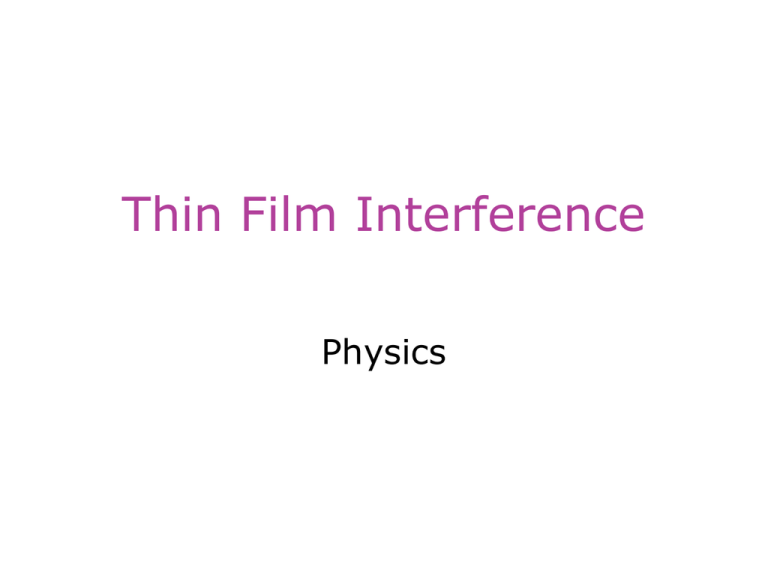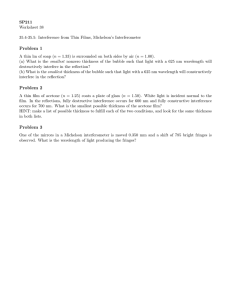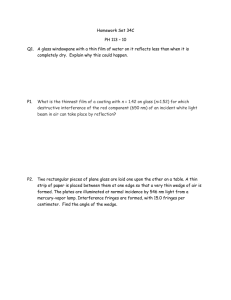Thin Film Interference
advertisement

Thin Film Interference Physics Thin Film Interference http://graphics.stanford.edu/courses/cs348 b-competition/cs348b-08/finals/soap.png Thin Film Interference Thin Film Interference http://laser.physics.sunysb.edu/~hilary/grap hics/interference.gif Thin Film Interference Thin Film Interference Ray 1 travels into the film and back it travels 2t (twice the thickness of the film). The path difference between the rays when they come out of the film is 2t. Condition for Constructive Interference: The reflected rays coming out of the film (5) and the rays that reflected on the film interface with the air(2), must have a path difference of an integer multiple of /2. This is because (2) flipped going from a less dense to a more dense medium. Note: is the wavelength in the film. Condition for Constructive Interference (Color) Path Difference= 2t =m /2 so thickness, t= m /4 where m=1,3, 5… t is the thickness of the film. Minimum thickness occurs when m=1. Why do bubbles have different colors? The thickness of the bubble continuously changes causing different colors to be “inphase” (constructive interference). If the reflected and refracted waves are “out of phase” (path difference not then no color will be seen. . Problem Calculate the minimum thickness of a soap bubble that results in constructive interference when a light of wavelength 500nm shines on it. Answer: 125nm Summary – Thin Film Interference • Reflection at a boundary • Refraction – different n values • Varies w/ thickness (colors) • Superposition of light waves


